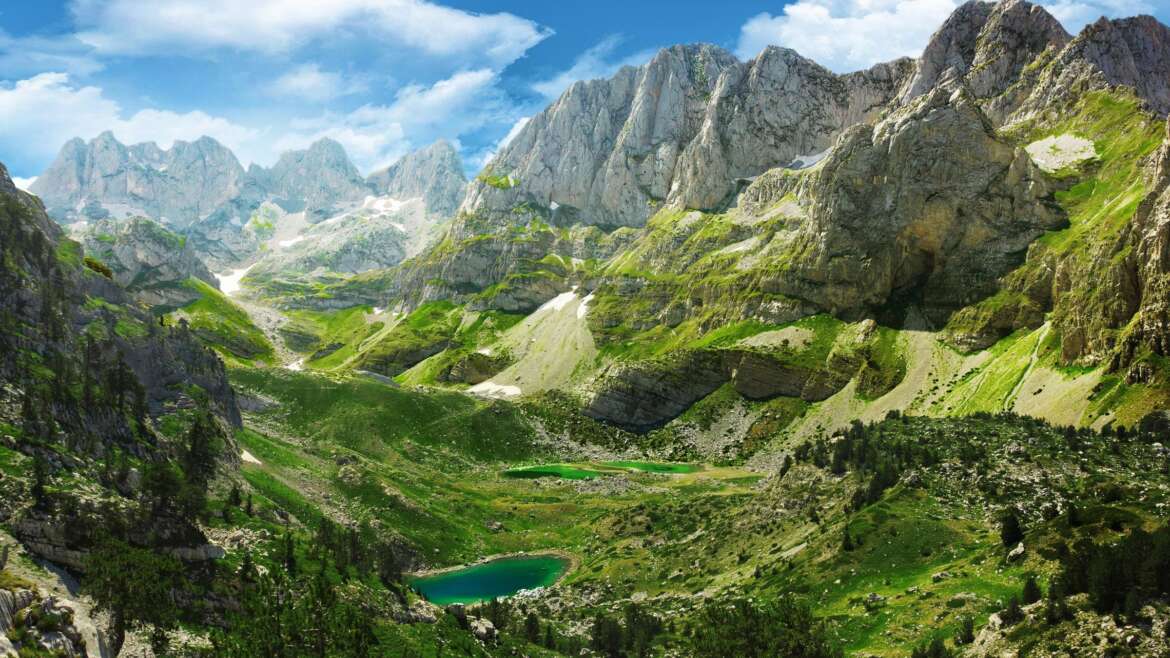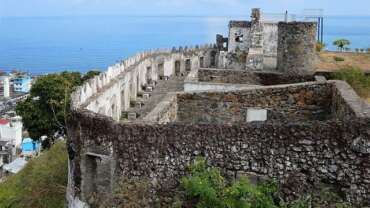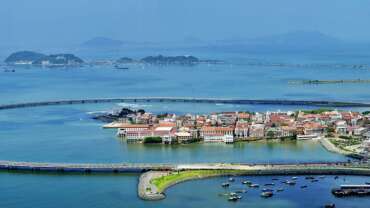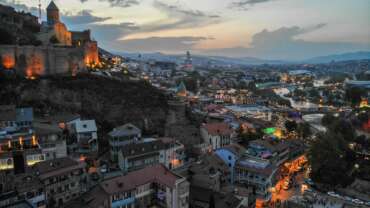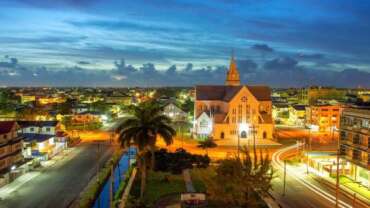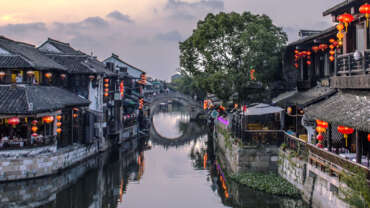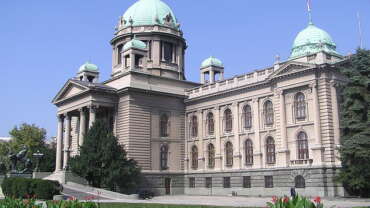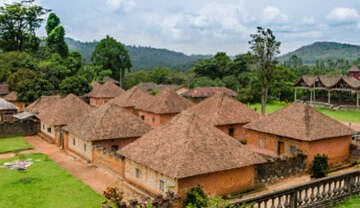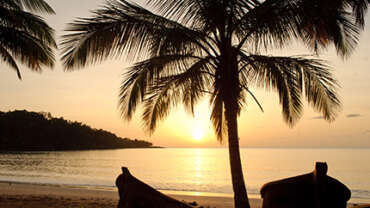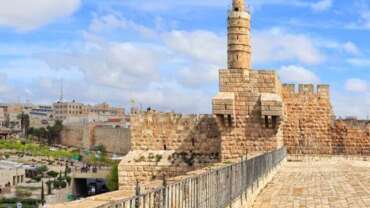Albania - Be taken by Albania
Albania, country in southern Europe, located in the western part of the Balkan Peninsula on the Strait of Otranto, the southern entrance to the Adriatic Sea. The capital city is Tirana (Tiranë).
Albanians refer to themselves as shqiptarë—often taken to mean “sons of eagles,” though it may well refer to “those associated with the shqip (i.e., Albanian) language”—and to their country as Shqipëria. They generally consider themselves to be descendants of the ancient Illyrians, who lived in central Europe and migrated southward to the territory of Albania at the beginning of the Bronze Age, about 2000 bce. They have lived in relative isolation and obscurity through most of their difficult history, in part because of the rugged terrain of their mountainous land but also because of a complex of historical, cultural, and social factors.
History of Albania
At the beginning of the third millennium B.C., an Indo- European population was established in the area and as a result of the merge, a population was conceived that retained specific cultural and language characteristics in the Balkan Peninsula (pelasgians tribe). Between the second millennium and the first century B.C., the Illyrian population was founded. Like the Greeks, the Illyrians succeeded in preserving their language and traditions in spite of Roman occupation.
Albania is considered as one of the regions with the most ancient population traces in the Balkans and Europe.
There are precisely the evidences of numerous archaeological findings in different parts of the Albanian regions, such as those of Lepenica in Vlora , Tren in Korca, Xara in Saranda, nearby Shkodra at Selca, Dajti Mountain, Prizren etc., that prove for traces of ancient population on Albanian territory. By studying these archaeological objects, it has been proved that the first Albanian settlements have started to be inhabited in the middle of the Paleolithic period (100,000 to 40,000 years BC).
Likewise, during the Neolithic period (6000 – 2600 BC), it’s indicated a much more dense population on Albanian territories. This is noted in the archaeological excavations, carried out in the area of Korça, where 12 settlements are found belonging to this period. Such settlements have also been discovered in Cakran, Kolonjë, in the valley of the Black Drin River in Mat, in Përmet etc.
The Indo-European population settled here at the beginning of the III millennium BC. As a result of this merger, a new population was created in the Balkan Peninsula (Pelasgians), which preserved the specific cultural and language characteristics.
This ancient population became the ancestors of the Illyrians between the II Millennium and I century B.C. After its fall in the year 30 B.C., and at the end of three Illyrian-Roman wars, Illyria fell under the control of the latter.
After the division of the Roman Empire (395 B.C.), Illyria became part of the Byzantine Empire.
Although they were under Roman conquest the Illyrians retained their language and traditions for centuries. “Via Egnatia”, the most important trade route between Rome and Constantinople (Byzantium), passed through the port of Durrës.
The first three Byzantine emperors (Anastasius I, Justin and Justinian I) were of Illyrian origin. The attacks by Barbarian migrating tribes (Visigoths, Huns, Ostrogoths and Slavs) continued during the V and VI century. In 1344, Albania was under the rule of the Serbian Kingdom. After its fall in the war against Turkey in 1389, the Arbëresh principalities were created.
The Principality of Balshaj was the most important one. The region was open to the Ottoman attacks, which gradually managed to take Arbëria under the rule. The culmination of the anti-Ottoman resistance reached during the years 1443-1468, when the Albanian national hero Gjergj Kastriot Skanderbeg led the revolt of the Albanians against the Ottomans.
During this period, Arbëria turned into a key factor in the entire Europe. After the formation of a coalition of Arbër Feudal in the Historical League of Lezha, held on March 2nd, 1444, the National Hero, Gjergj Kastrioti Skanderbeg, led for 25 years the resistance against the Ottoman threat.
There were three Ottoman attacks n Kruja, all of which failed and only 10 years after the death of Skanderbeg, in 1478, they finally managed to capture Kruja. For more than 400 years, Albania was under the Ottoman regime. Albanian Resistance continued during the subsequent periods, being inspired especially by the Illuminist movement of the Albanian National Renaissance, which emerged in XIX century.
Successive revolts and efforts reached their peak with the proclamation of the National Independence on November 28th, 1912. The Assembly of Vlora established the first Albanian government led by Ismail Qemali. During the First World War, which broke out in 1914, Albania turned into a battlefield for different occupation troops, such as Austrian-Hungarian, Italian and French troops. The Congress of Lushnja, held in 1920, aimed to maintain the territorial integrity of Albania after the First World War.
This Congress proclaimed Tirana as the capital of Albania. In the same year, Albania adhered to the “League of Nations”. After a period of political turmoil in 1924, the country went through a bourgeois-democratic revolution and immediately after it, the country was led by the government of Fan Noli. In 1928, the country was declared a monarchy under King Zog I. The latter pursued a policy of rapprochement with Italy and Great Britain, but without being able to avoid a military occupation of Albania by Italian fascists.
On April 7th, 1939, the country was occupied by Mussolini’s troops, putting an end to the monarchy regime that lasted 11 years. In 1943, the country was occupied by Hitler’s Nazi forces. The resistance to foreign attacks is known as Anti-Fascist National Liberation Front. The end of World War II brought into force the Stalinist regime of Enver Hoxha.
For about 50 years, the totalitarian regime followed a policy of isolation, leaving the country in economic poverty and totally isolated from the international community. Its economic policy was based on the principle of “relying on its own forces”, by banning loans and credits from abroad. This situation continued until 1991 when Albania, as a consequence of new winds that blew in Eastern Europe, eventually emerged from isolation.
Since 1991, Albania holds pluralistic elections. The Socialist Party, along with its allies, is currently in power since 2013. Since 2009, Albania adhered to NATO as a member with full rights. The country is now undergoing a series of reforms, which aim the integration of Albania into the European Community.
People of Albania
Ethnic groups
Albania has one of the most homogeneous populations in Europe, with non-Albanians accounting for less than one-tenth of the total population. The largest minorities are Vlachs; Greeks, concentrated mainly in the southeast; and Macedonians, living along the eastern border.
The two main subgroups of Albanians are the Gegs (Ghegs) in the north and the Tosks in the south. Differences between the two groups were quite pronounced before World War II. Until the communist takeover in 1944, Albanian politics were dominated by the more numerous Gegs. Renowned for their independent spirit and fighting abilities, they traditionally opposed outside authority, whether that of foreign invaders or that of the Albanian central government. Traditional Geg society was based on tribal groups, each one led by a clan chieftain, or bajraktar. Under the communist regime, this clan system largely disappeared from Albania, but the patriarchal families characteristic of the Gegs are still evident among ethnic Albanians in Serbia, Montenegro, Kosovo, and North Macedonia.
Because their southern territories were easily accessible to the outside world, the Tosks were more subject to foreign influence than the Gegs. Before World War II, theirs was a mostly semifeudal society. The peasantry, which made up most of the population, lived at the subsistence level, while a small group of large landowners controlled about two-thirds of the land. The communist movement drew most of its initial support from Tosks in the south.
Languages
The Albanian language, called shqip or shqipe by Albanians, is of interest to linguists because, as a descendant of the extinct Illyrian tongue, it is the only surviving member of its branch of the Indo-European language family. Influenced by centuries of rule by foreigners, the Albanian vocabulary has adopted many words from the Latin, Greek, Turkish, Italian, and Slavic tongues. There are two principal dialects: Geg, spoken north of the Shkumbin River, and Tosk, spoken in the south. Geg dialects are also spoken in Serbia, Montenegro, Kosovo, and North Macedonia, and Tosk dialects, though somewhat archaic as a result of centuries of separation from their place of origin in Albania, are prominent in the Albanian communities of Greece and Italy. Although there are variations even within these two dialects, Albanians can understand one another with no difficulty.
Because official business and ecclesiastical functions had long been conducted in Latin or Greek, Albanian did not acquire a definitive orthography until 1908, when a writing system was adopted based on the Roman alphabet. Before this time, publications written in Albania used a mix of different alphabets—namely, Latin, Greek, Turko-Arabic, and Cyrillic. Attempts were then made in following decades to create a unified language based on the Geg dialect of the central Elbasan region; however, all printed materials were published in Tosk until 1972, when a Congress of Orthography was convened in Tirana, and a unified Albanian language based on Tosk was established.
Religion
As a legacy of nearly five centuries of Ottoman rule, Albania is a predominantly Muslim country. However, as a result of the rigid enforcement of atheism during the communist regime, today most Albanians are adherents of religious groups in name only and practice largely secular lifestyles. In 1967 the communist party officially proclaimed Albania an atheistic country and commenced to close all places of worship (churches, mosques, and zāwiyahs), confiscate their property, and ban religious observances. For the whole of its 45 years of absolute rule, the party engaged in large-scale persecution of believers. Only in 1990, when freedom of worship was restored, did churches and mosques begin reopening.
In the early 21st century about seven-tenths of the Albanian population was nominally Muslim, more than half of them Sunni Muslims and the next largest group being the Bektashi sect. Those who identified with Eastern Orthodoxy constituted about one-fifth of the population, and those associated with Roman Catholicism constituted about one-tenth. Muslims are spread throughout the country, although they particularly dominate the centre. Roman Catholics have settled primarily in the northern part of the country, mainly in the city of Shkodër, while Orthodox Christians are prominent in the southern districts of Gjirokastër, Korçë, Berat, and Vlorë. Mother Teresa, a Skopje-born ethnic Albanian who served as a Roman Catholic missionary to India in the 20th century, is a folk hero in Albania.
Cultural Life of Albania
Cultural milieu
Cultural development in Albania was handicapped by more than four decades of communist rule. The government imposed strict censorship on the press, publications, and the performing arts. The succeeding governments have made a conscious effort to encourage and preserve the country’s rich folklife. Albania is known for its traditions of hospitality, which are based on the kanun (“code”), a set of unwritten laws devised in the 15th century by Prince Lekë Dukagjin, an Albanian feudal lord. The kanun governs all social relations, including those involving marriage, death, family, and religion. Some Albanians still follow its customary laws, including the right to avenge a killing; gjakmarrje (“blood feuds”) were known to occur in parts of northern Albania into the 21st century.
Daily life and social customs
In addition to traditional religious holidays, pagan holidays and folklore play a role in Albanian life. Agricultural fairs and religious festivals occur throughout the year and often include competitions that highlight highly skilled sports, which are occasionally contested in the national stadium in Tirana. Dita e Verës (Spring Day) is celebrated in mid-March in Elbasan. Folkloric festivals take place in towns across the country; one of the largest is the National Festival of Folklore held in Gjirokastër, a historic town that was designated a UNESCO World Heritage site in 2005. Albania’s independence is celebrated throughout the country on November 28.
Much of Albania’s cuisine consists of meat and seafood. Among the most popular dishes are roasts, biftek (beef loin), qebaps (kabobs), and qoftë (meatballs). Fergësë Tirana, a hot dish of meat, peppers, eggs, and tomatoes, is a specialty of Tirana. In southern Albania, kukurec (sheep intestines broiled on a spit) is a common entree. Carp and the revered but rare koran (trout) are the preferred food fish throughout the country. Oshaf, a pudding made from figs and sheep’s milk, is a common dessert. The traditional Albanian drink is raki, a local brandy distilled from grapes that is often imbibed before a meal.
The arts
Albania’s traditional arts are rich and varied. They include fine embroidery and lace making, woodworking, and furniture making. Albanians enjoy music and storytelling, especially savouring the epics recounted by traditional singers. These singers often memorize verses hundreds and even thousands of lines long that celebrate the deeds of ancient heroes. Their tradition, however, seems to be in danger of extinction, for few young Albanians have elected to take up this ancient Balkan art form.
Albanian folk music is national in character but has Turkish and Persian influences. Albanian iso-polyphony, derived from Byzantine church music, is a form of group singing that is performed primarily by men. Albanian iso-polyphony was listed by UNESCO in 2005 as an outstanding example of the world’s intangible cultural heritage. Revived in the early 21st century, this folk tradition is still practiced at weddings, festivals, and other social events. Common folk instruments used in Albania include the çifteli (a long-necked two-stringed mandolin) and the gërnetë (a type of clarinet).
Albania boasts a long literary tradition. The country’s best-known contemporary writer is novelist and poet Ismail Kadare, whose work has been translated into some 30 languages. Notable early 20th-century poets include Gjergj Fishta (1871–1940), Ndre Mjeda (1866–1937), and Asdren (Alexander Stavre Drenova; 1872–1947), the last of whom wrote the lyrics for Albania’s national anthem. Fan S. Noli (1882–1965), an Orthodox bishop who served briefly as prime minister, is remembered for his artful turn-of-the-20th-century translations of some of the world’s classic works of drama and poetry. (See also Albanian literature.)
Cultural institutions
Tirana is the home of a number of cultural institutions, including the National Library, the National Theatre, the Opera and Ballet Theatre, the National Museum of History, and the National Museum. There are also numerous city orchestras throughout the country. Skanderbeg’s citadel at Krujë has been rebuilt and now houses a museum.
Discover Albania - Europe's last unturned stone
Tirana – A dynamic capital city.
Tirana, a city with never-ending movement and energy
Tirana, the heart and capital of Albania, like all other European metropolises has never-ending movement and energy. With its clubs, bars, cafes, and taverns, Tirana is worth discovering by both day and night. The hospitality shown towards tourists is something that will mark your journey not only in Tirana but also all over the country.
There are different thoughts regarding the origin of the name of the city. Some think that it relates to Tyrrenia (a name of Etruscan origins), while other believe that it relates to the word Theranda (harvest), or to the Tirkan (a castle at the foot of Mount Dajti).



